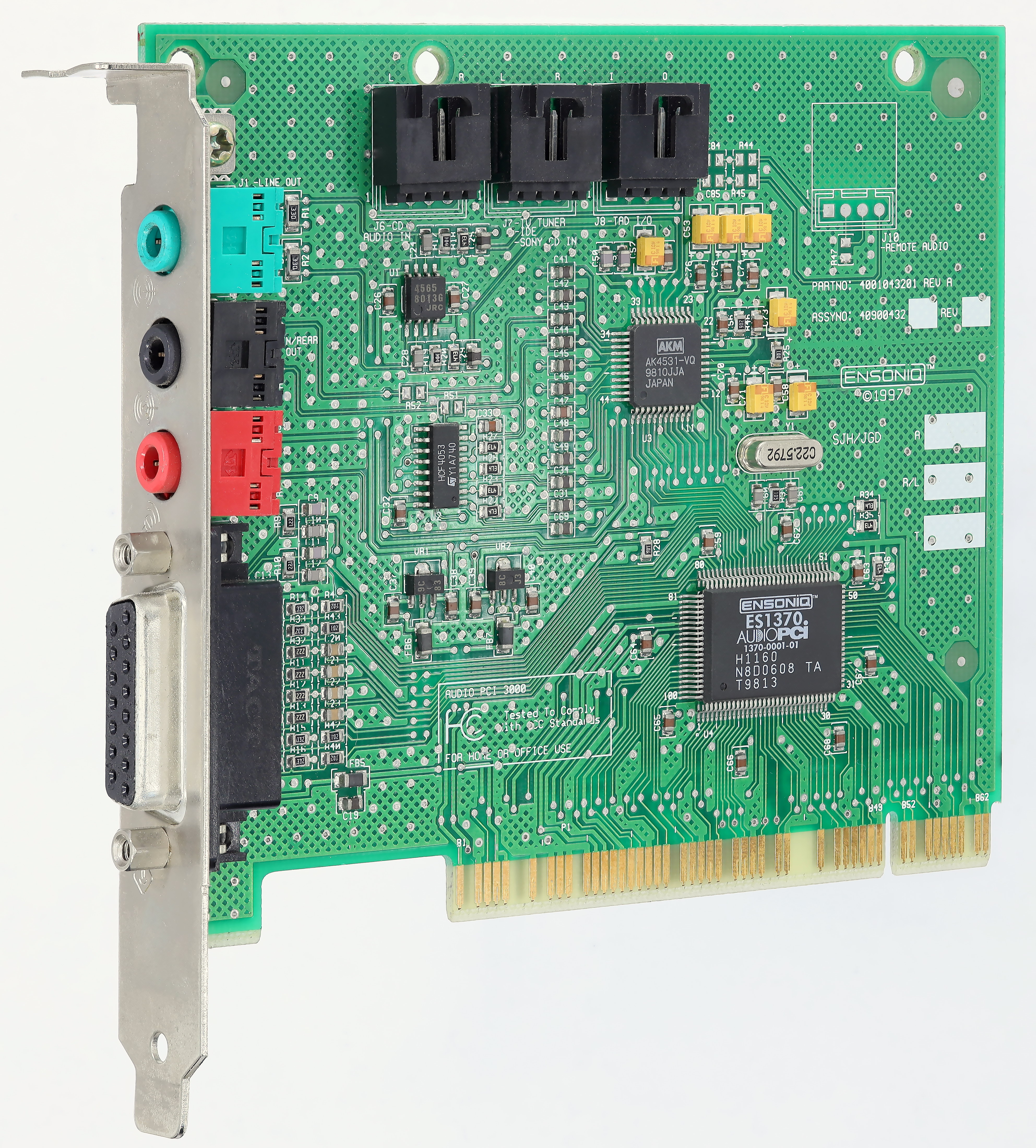|
Ensoniq AudioPCI
The Ensoniq AudioPCI is a Peripheral Component Interconnect (PCI)-based sound card released in 1997. It was Ensoniq's last sound card product before they were acquired by Creative Technology. The card represented a shift in Ensoniq's market positioning. Whereas the Ensoniq Soundscape, Soundscape line had been made up primarily of low-volume high-end products full of features, the AudioPCI was designed to be a very simple, low-cost product to appeal to system Original Equipment Manufacturer, OEMs and thus hopefully sell in mass quantities. Low cost Towards the end of the 1990s, Ensoniq was struggling financially. Their cards were very popular with PC Original Equipment Manufacturer, OEMs, but their costs were too high and their musical instrument division was fading in revenue. Pressure from intense competition, especially with the dominant Creative Labs, was forcing audio card makers to try to keep their prices low. The AudioPCI, released in July 1997, was designed primarily ... [...More Info...] [...Related Items...] OR: [Wikipedia] [Google] [Baidu] [Amazon] |
